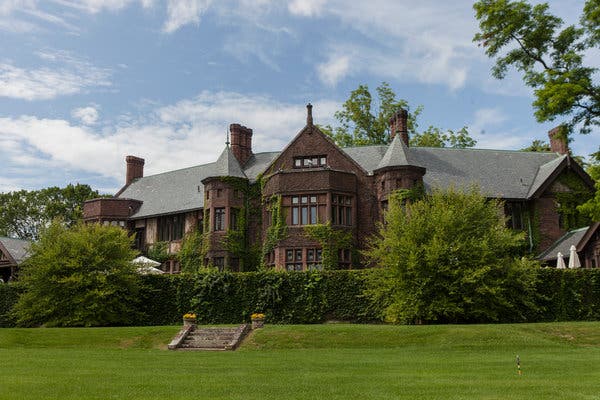Ken Price was hired 36 years ago as director of public relations at the Palmer House Hilton. But it’s his other gig at the renowned Chicago property that speaks more to him: That of hotel historian, an official title he has held for 11 years.
Mr. Price is the go-to guy for anything relating to the history of the hotel, which opened its opulent doors on Sept. 26, 1871 — and promptly shuttered them 13 days later, when the Great Chicago Fire tore through the building. Mr. Price knows when the property reopened (Nov. 8, 1873); its role in the creation of the brownie (The owner’s wife, Bertha Palmer, asked the hotel’s pastry chef to create something portable for the 1893 Chicago World’s Fair); and what Phyllis Diller, the last performer in the hotel’s Empire Room nightclub before it closed in 1976, was really like. (“Great. She became a good friend.”)
“I immersed myself for eight months in the stacks of the old Chicago Historical Society and got involved in the microfiche and clippings and stuff in boxes,” said Mr. Price, who won a lifetime achievement award last year from the Historic Hotels of America. “I got involved in the blood and guts and DNA of the personalities of the people. I began to realize that the story was remarkable.”
Part reference librarian, part gossip columnist, distinct from a concierge, the historian has become an increasingly popular figure in high-end hotels or inns with actual history. Some are employees who take on the role for love (if not a paycheck), while others do it for fun. Still others are real-world professionals who find it a worthwhile project. As such, they’ve taken it upon themselves to learn, in elaborate detail, the background of their favorite lodge, resort, retreat or inn.
It makes sense: Hotels are not just places to lay one’s head. They’re also about the history of a particular city or a particular time period.

CreditLauren Lancaster for The New York Times
“It’s important to share its stories with the guests, the people who work there and the city as a whole,” said Pilar Pérez de Sevilla, who coresearched the history of Casa Gangotena, in Old Town Quito in Ecuador. Her work led to better understanding of the hotel’s location at a corner of the San Francisco Plaza — the history of the plaza stretches back to the time of the Incas, and according to early Spanish chroniclers, during the 15th century the plaza was surrounded by palaces and temples.
Fintan Gorman is the unofficial historian of Ashford Castle, in Mayo, Ireland. His late mother worked at the Castle mainly in housekeeping, and was there when John Wayne filmed “The Quiet Man” on the estate in 1951. A former primary schoolteacher and high school principal, Mr. Gorman began conducting tours of the castle after retiring in 2014. Whenever a guest wants a tour of the property, he’s the man to talk to.
“I try to outline the historic development of the castle in the context of national and international events,” he said. “While highlighting the social and economic importance of the estate to the area, I get to meet, chat with and learn from very interesting and pleasant people from all over the world.”
For David Pupo, learning about Blantyre, in Lenox, Mass., was about reclaiming his own past. Mr. Pupo grew up about a half mile away from the luxury hotel, which was built in 1902.
As a teenager, Mr. Pupo, who doubles as Blantyre’s director of membership and concierge services, spent his summers swimming in the grand pool behind the main house, back when it was a swim club for locals. Mr. Pupo wanted to know more about the 110-acre estate that played such a prominent role in his youth.
So he read everything that had been written on the place. He now leads daily history tours in the mansion, which was once briefly owned by the filmmaker D.W. Griffith. “We show how the house was used in the Gilded Age period, and compare and contrast it to how it is being used today as a five-star hotel,” he said.
Others are utilizing the property’s history to help inform the present.
When the real estate developer Anthony Champalimaud took over Troutbeck, a country estate-turned-guesthouse in Amenia, N.Y., in 2016, he and his wife, Charlie, spent two years exhaustively researching the history. (Mr. Champalimaud is the former managing director of Champalimaud, a design firm that has overseen renovations and redesigns at many hotels and guest properties, including Singapore Raffles.)
Troutbeck was built in 1765 by the Bentons, a family of farmers. The last in the family to own it was Myron Benton, a poet and writer whose pals include Ralph Waldo Emerson, Mark Twain and Henry David Thoreau, all of whom visited regularly.
In 1902, the property was purchased by Colonel Joel Spingarn and his wife, Amy. Mr. Spingarn, who founded the publishing house Harcourt Brace & Company, entertained the likes of Ernest Hemingway, Sinclair Lewis and Theodore Roosevelt (The president favored room 8). Later visitors included Supreme Court Justice Thurgood Marshall, W.E.B. Du Bois, and Langston Hughes.
Through her research, Mrs. Champalimaud made some amazing discoveries, like letters to Amy Spingarn from Langston Hughes and Dr. Martin Luther King Jr.
The Champalimauds used some of their findings to impact the property’s aesthetic. “We recreated a new font and logo that derived from Joel Spingarn’s personal stationery,” said Mr. Champalimaud. His Ex-Libris art nouveau style design is on every room’s key card, while copies of Dr. King’s letter hang in the inn’s 37 guest rooms.
“There was also so much tangible heritage there which I think is unusual,” said Ms. Champalimaud. “Troutbeck’s history was one of the central reasons we found it so attractive.”






